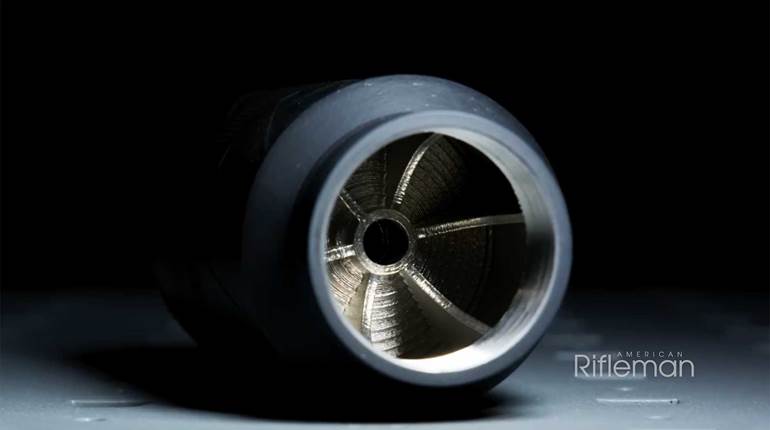It was apparent to the U.S. Army in 1944 that it had a problem. And that problem was the German Machinengewehr 42, or MG42. How big a problem? Enough to make what, in retrospect, appears to be more of a propaganda movie than a training film. “War Department Film Bulletin No. 181—Automatic Weapons—American vs. German” (embedded above) was intended to allay the fears of young soldiers heading into combat facing what was dubbed “Hitler’s Buzz saw” by G.I.s.
Indeed, the MG42 was the most fearsome rifle-caliber machine gun on the battlefield during World War II. The 25-lb. MG42 could be mounted on either a vehicle, its bipod or an ingenious tripod with a recoil-reducing mechanism, like the earlier MG34. But the belt-fed, roller-locking 7.92x57 mm MG42 machine gun could fire up to 1,500 rounds per minute and had quick-change barrel capability.
The narrator’s enthusiastic 1940s baseball announcer voice, however, cannot cheerily mask the ominous sound of an MG42 ripping off bursts. With such a high cyclic rate, individual shots cannot be discerned. “Their bark is worse than their bite,” the narrator implores. I would contend the buzz-saw’s bite is what one needed to worry about. “The German gun is good, but ours is better,” said the narrator like he was calling the Yankees chances at the pennant.
Of course, the U.S. Browning machine guns, including the then-brand-new M1919A6 and the water cooled 1917A1 demonstrated in the film, were very good indeed. But they reflected American tactical thinking and doctrine of the time; a slower rate of fire delivering less, more accurate fire. American belt-fed machine guns (and the Browning Automatic Rifle) performed admirably during the war, but much emphasis was placed on marksmanship and the individual rifleman with his M1 Garand. As pointed out in the film, much of the German infantryman’s job was to carry ammo for the MG42.
The film also covers the misnamed “Schmeisser” (Hugo designed many guns, but the MP38/40 was not one of them) and how it stacked up against the Thompson and then-new M3 “Grease Gun” in side-by-side test done by guys who were, no doubt, Thompson and Grease Gun instructors. You can see where the U.S. Army was trying to go with the slow rate of fire of the M3.
The MG42 changed where machine gun design would go for the next 70 years both developmentally and tactically, as it was the first true “general purpose” machine gun. Versions of the gun are still in service today (MG3, MG74), and the FN Mitrailleuse d’appui general or Mitrailleuse a gaz (MAG), based on the general-purpose concept of the MG42, is in service with American troops all over the world, both on vehicles and in ground use as the M240. Shrink that gun down to 5.56x45 mm NATO, and you have the M249 SAW.
Regardless of the narrator’s stretching the American point of view on small arms, “War Department Film Bulletin No. 181—Automatic Weapons—American vs. German” is a snapshot in time, and well worth watching.
Related Reading
Video - Shooting the MG42 Machine Gun
The U.S. Model 1919A4 Machine Gun
The Forgotten Guns of D-Day
The Guns of Operation Market Garden
I Have This Old Gun: German MG42

























